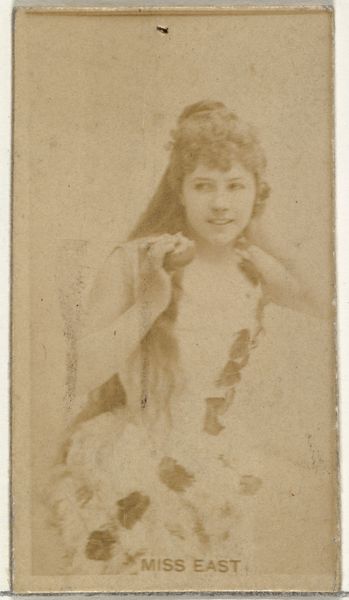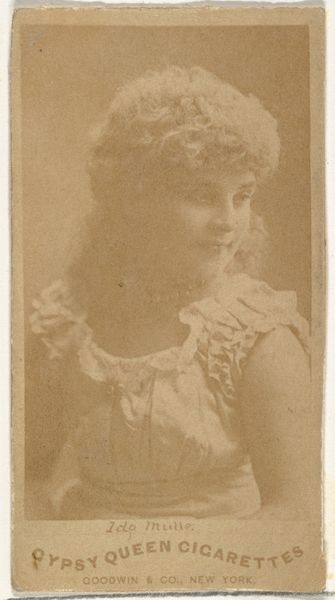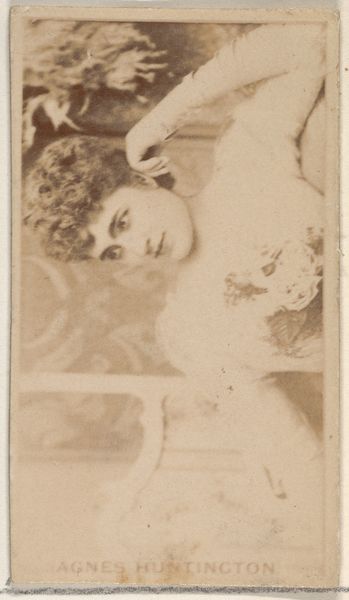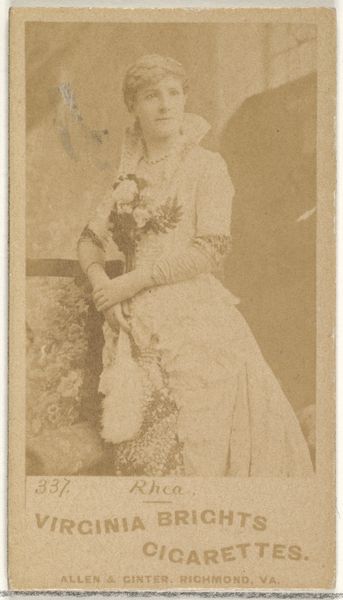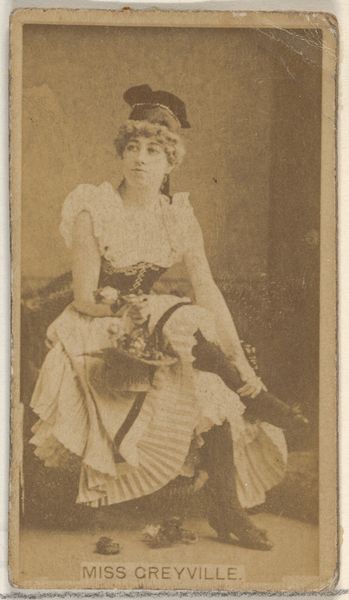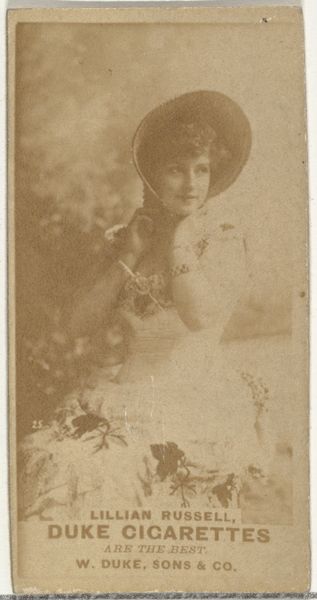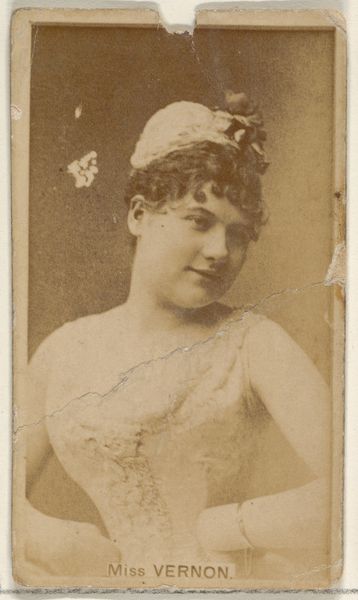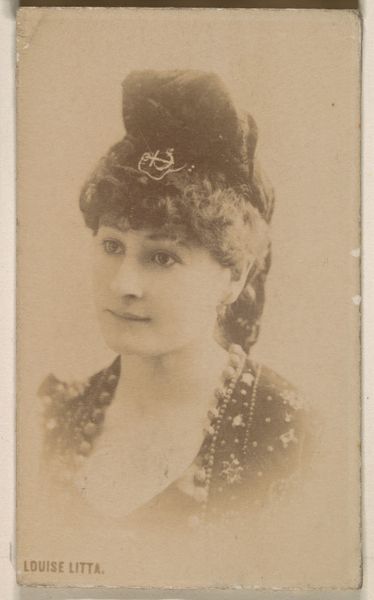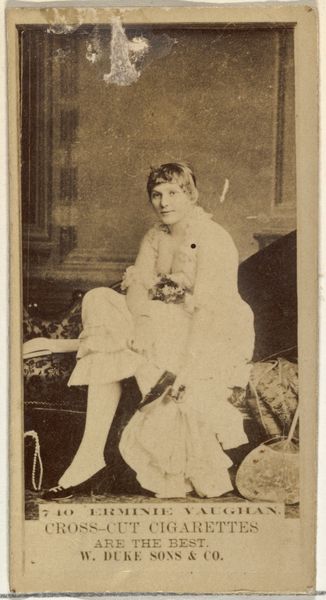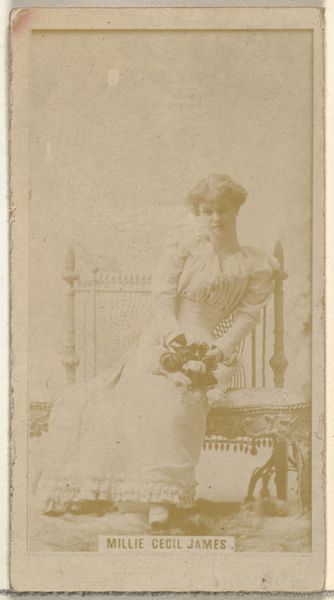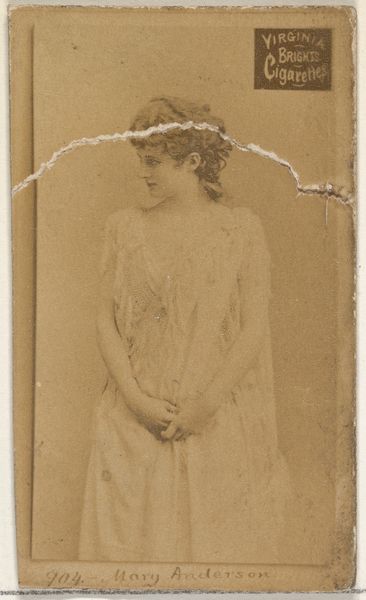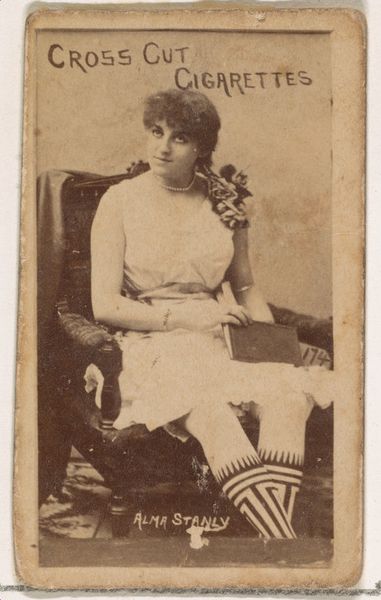
Card Number 34, Frankie Kemble, from the Actors and Actresses series (N145-6) issued by Duke Sons & Co. to promote Duke Cigarettes 1880s
0:00
0:00
drawing, print, photography, albumen-print
#
portrait
#
drawing
# print
#
photography
#
coloured pencil
#
albumen-print
Dimensions: Sheet: 2 11/16 × 1 3/8 in. (6.8 × 3.5 cm)
Copyright: Public Domain
Editor: This is "Card Number 34, Frankie Kemble, from the Actors and Actresses series" created in the 1880s by W. Duke, Sons & Co., a promotional print for Duke Cigarettes. It seems to be a photographic print with some kind of coloring added. What’s fascinating to me is the overlay of advertising and celebrity, even then. What symbols jump out at you in this image? Curator: Immediately, I see a carefully constructed duality. The explicit branding proclaims “Duke Cigarettes ARE the BEST," aiming for direct association with aspiration. Yet, observe Frankie Kemble herself – the choice isn't accidental. Actresses, particularly then, embodied a controlled form of transgression; objects of desire but also agents in their own right. Note how her gaze is both inviting yet slightly detached. It suggests both accessibility and a sense of her own interiority. The cigarette card, therefore, doesn’t just sell tobacco; it sells access – or the *illusion* of access – to beauty, status, and even a touch of the forbidden. Editor: So, the symbolism goes beyond just advertising; it’s about selling a lifestyle? Curator: Precisely. The 'best' cigarette is less about flavour and more about affiliation. This imagery draws on the cultural weight that actresses held, projecting those qualities onto their product. Consider how these tiny cards would have circulated; passed around, collected, discussed...miniature secular icons, shaping and reflecting desires in a rapidly changing world. The flower bouquet and her stylish hat serve as further emblems of her wealth and social standing, but, crucially, these also underscore how the rising tide of photography democratised celebrity culture in ways hitherto unseen. Editor: That’s a perspective I hadn’t considered. The small size of the card made it accessible in many different ways. Curator: Indeed! Thinking about art this way, it becomes less about passive appreciation and more about actively deciphering these symbols of how our world is shaped and perceived even to this day. I think I might look into tobacco advertisement history. Editor: I should really start to investigate these overlaps in media. Thanks!
Comments
No comments
Be the first to comment and join the conversation on the ultimate creative platform.
